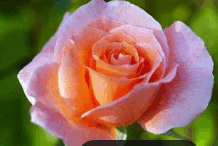Gardeners are eager to get out and do something in the landscape this time of year. One chore that can be taken care of during March is pruning certain shrubs. Often, gardeners approach pruning with trepidation, but it is not as difficult as it may seem.
Remember, not all shrubs need
to be pruned (i.e., witch hazel), and certain shrubs, which will be identified later in this article, should not be pruned this time of year. Shrubs are pruned to maintain or reduce size, rejuvenate growth, or to remove diseased, dead or damaged branches. Deciduous shrubs are those that lose leaves each winter. Evergreen shrubs maintain foliage all year and include yews and junipers.
Deciduous shrubs are placed into three groups:
• Those that flower in the spring on wood produced last year;
• Those that flower later in the year on current seasons’ growth; and
• Those that may produce flowers, but those flowers are of little ornamental value.
Shrubs that flower in the spring should not be pruned until immediately after flowering.
Though pruning earlier will not harm the health of the plant, the flowering display will be reduced or eliminated. Examples of these types of plants include forsythia, lilac, flowering quince, Vanhoutte spirea, bridal wreath spirea and sweet mockorange. Shrubs that bloom on current seasons’
growth or that do not produce ornamental flowers are best pruned in March. Examples include Rose-of-Sharon, pyracantha, Bumalda spirea, and Japanese spirea.
Pruning during the spring allows wounds to heal quickly without threat from insects or disease. There is no need to treat pruning cuts with paints or sealers. In fact, some of these products may slow healing.
There are three basic methods used in pruning shrubs: thinning,
heading back, and rejuvenating. Thinning is used to thin out branches
from a shrub that is too dense. It is accomplished by removing most of the inward growing twigs by either cutting them back to a larger branch or cutting them back to just above an outward- facing bud. On multi-stemmed shrubs, the oldest canes may be completely removed.
Heading back is done by removing the end of a branch by cutting it back to a bud and is used for either reducing height or keeping a shrub compact. Branches are not cut back to a uniform height because this results in a “witches-broom” effect.
Rejuvenation is the most severe type of pruning and may be used on multi-stem shrubs that have become too large, with too many old branches to justify saving the younger canes. All stems are cut back to 3- to 5-inch stubs. This is not recommended for all shrubs but does work well for spirea, forsythia, pyracantha, ninebark, Russian almond, little leaf mock orange, shrub roses and flowering quince. (Ward Upham)




